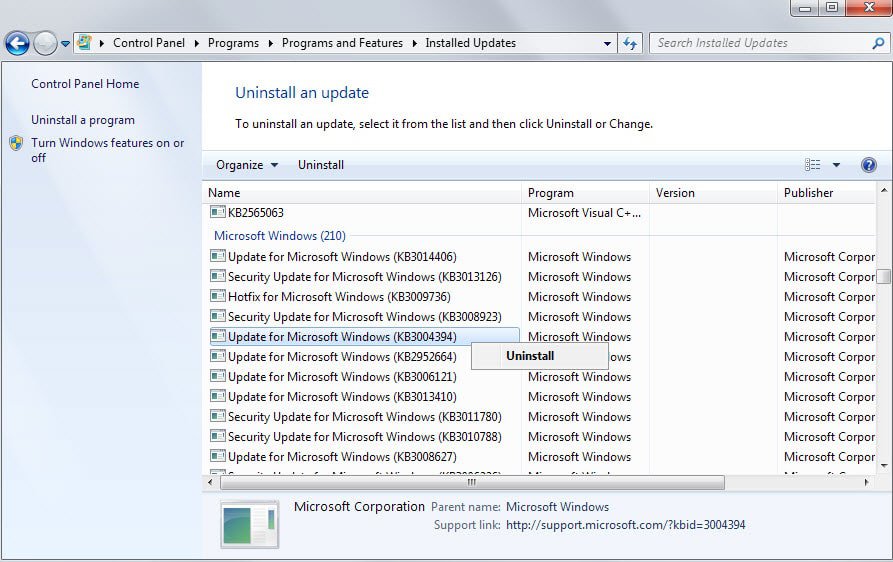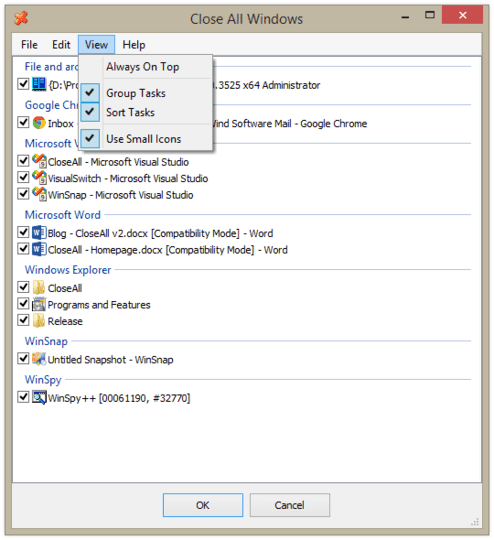
- How to close all windows on windows 7 how to#
- How to close all windows on windows 7 drivers#
- How to close all windows on windows 7 windows 10#
- How to close all windows on windows 7 password#
If some files are in use, Windows will not delete them and shows an error message. Note: If you see a warning message or admin prompt, press “ Yes” or “ Continue“.Īs soon as you press the Del button, Windows will delete all the local temp files and folders. Press the “ Delete” key on your keyboard to delete all those files and folders.Select all the folders and files in the temp folder with “ Ctrl + A” keybinding.Type “ %temp%” in the address bar and press Enter.First, open the Windows File Explorer with “ Win + E” keybinding.All you have to do is just delete the files from the temp folder. You can easily clear them as and when needed. Windows stores a lot of cache files in the Local Temp folder. First, Clear Local Temp Cache (%temp% folder) First, Clear Local Temp Cache (%temp% folder).Since Windows has several different caches, follow the steps shown below one after the other to clear all cache in Windows 10.
How to close all windows on windows 7 drivers#
Microsoft implemented it this way because people often restart their computers to attempt to fix problems, and a full shutdown and restart might refresh the Windows system kernel or your computer’s hardware drivers if either are stuck in a bad state.No matter the reason, if you think the Windows cache is causing unnecessary problems, you can clear it pretty easily.



Restarting this way bypasses Fast Startup if you have it enabled. It’s important to note that if you need a completely clean Windows boot, you can also achieve it by using the “Restart” feature built into Windows-no disabling Fast Startup necessary. And the next time you start it up, you’ll get a clean boot with a full reload of Windows. The next time you shut down your Windows PC, it will shut down completely without any hibernation. Then click “Save Changes” and close Control Panel. Note: If you don’t see the Fast Startup option, it means your PC doesn’t support Fast Startup and is already shutting down completely. If you see “Turn on fast startup (recommended),” remove the checkmark beside it. Then look under the “Shutdown Settings” section near the bottom.
How to close all windows on windows 7 password#
On the “Define power buttons and turn on password protection” page, first click the “Change settings that are currently unavailable” link near the top of the page. Under “Power Options,” click “Change what the power buttons do.” When Control Panel opens, click “Hardware and Sound.”
How to close all windows on windows 7 windows 10#
To disable Fast Startup, first open Control Panel in Windows 10 or Windows 11 by opening the Start menu and typing “control panel,” then clicking the Control Panel icon when it appears. (Restarting bypasses Fast Startup, as you’ll see below.) You’ll see another way to tell in the steps ahead. One way you can detect a traditional “slow startup” is if your PC takes longer to restart than it takes to perform a cold boot when you first turn on your machine. So your PC might already be shutting down completely.

How to close all windows on windows 7 how to#
RELATED: How to Turn Off a Windows 11 PC How to Disable Fast Startup Mode and Shut Down Completelyįirst, it’s important to know that not all PCs support Fast Startup mode. So if Fast Startup is enabled on your PC and you select “Shut Down” in the Start menu, you’re not getting a clean restart when you power it back up again. This lets Windows load quickly when you power up your PC again. With a feature called Fast Startup, introduced in Windows 8 and still present in Windows 10 and Windows 11, many PCs that support hibernation mode actually “shut down” to a state similar to hibernation, which saves the state of the operating system (in RAM) to a file called hiberfil.sys.


 0 kommentar(er)
0 kommentar(er)
